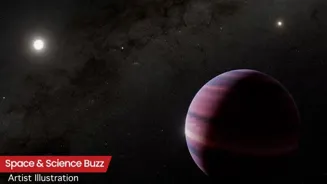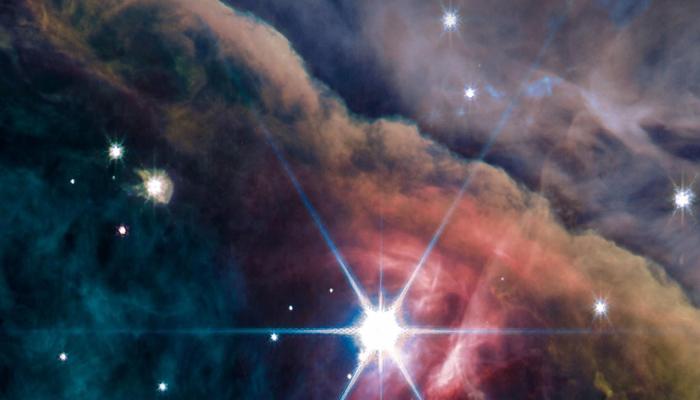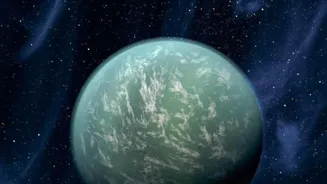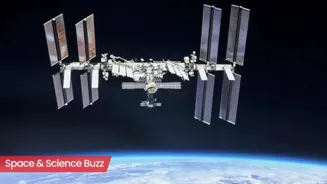Here are today’s most important updates from the realm of Science and Space.
A Giant Awaits: Webb Finds New World Near Our Solar System
Astronomers using NASA’s James Webb Space Telescope (JWST) have uncovered strong
evidence for a giant new planet orbiting Alpha Centauri A, one of the stars in the closest stellar system to Earth at just four light-years away. The Alpha Centauri system comprises three stars: Alpha Centauri A and B, both similar in size and age to the Sun, and the faint red dwarf Proxima Centauri. While three planets have been confirmed around Proxima, identifying planets around the Sun-like pair has been far more challenging due to the brightness and close proximity of the stars. The object appears to orbit at roughly twice the Earth-Sun distance, placing it within the star’s habitable zone, the region where conditions could allow liquid water. However, this potential planet is a gas giant with a mass comparable to Saturn, meaning it is unlikely to support life as we know it.
Safeguarding Space Secrets: ISRO to House Moon Rocks

The Indian Space Research Organisation (ISRO) is set to establish an advanced Curation Facility dedicated to the safe handling, preservation, and storage of lunar soil and rock samples brought back by the Chandrayaan-4 mission. Dr. Jitendra Singh, Union Minister of State (Independent Charge) for Science and Technology, shared these details. Chandrayaan-4 aims to collect pristine lunar samples and return them to Earth, ensuring their integrity by preventing contamination during all phases of handling. The mission will transfer leak-proof sample canisters to the Curation Facility, which is designed to operate in a controlled environment featuring Class 100 and Class 1000 clean rooms compliant with ISO standards.
2,400 Seats to the Stars: Humanity Eyes Alpha Centauri

Engineers have designed a spacecraft that could take up to 2,400 people on a one-way trip to Alpha Centauri, the star system closest to our own. The craft, called Chrysalis, could make the 25 trillion mile (40 trillion kilometer) journey in around 400 years, the engineers say in their project brief, meaning many of its potential passengers would only know life on the craft. Chrysalis is designed to house several generations of people until it enters the star system, where it could shuttle them to the surface of the planet Proxima Centuri b — an Earth-size exoplanet that is thought to be potentially habitable. The vessel, which would measure 36 miles (58 km) in length, would be constructed like a Russian nesting doll, with several layers encompassing each other around a central core. The layers include communal spaces, farms, gardens, homes, warehouses and other shared facilities, each powered by nuclear fusion reactors.
Satellite Reveals Land Loss to Drought the Size of 2 U.P.s Annually

Dry regions across the world are expanding by an area nearly twice the size of Uttar Pradesh (UP) every year. A new study published in the journal Science Advances, in collaboration with NASA, reveals that several parts of the world are witnessing a sharp decline in water availability. Several regions across the globe have become significantly drier compared to earlier decades. One major zone spans from southwestern North America to Central America, where prolonged dry spells are becoming the norm. The spread of the European drought has now created a mega-drying region stretching from North Africa through Europe, the Middle East, Central Asia, northern China, and Southeast Asia. Researchers also found that wet areas are getting wetter, particularly in East Africa and western Sub-Saharan Africa, driven by global warming and urbanisation.















